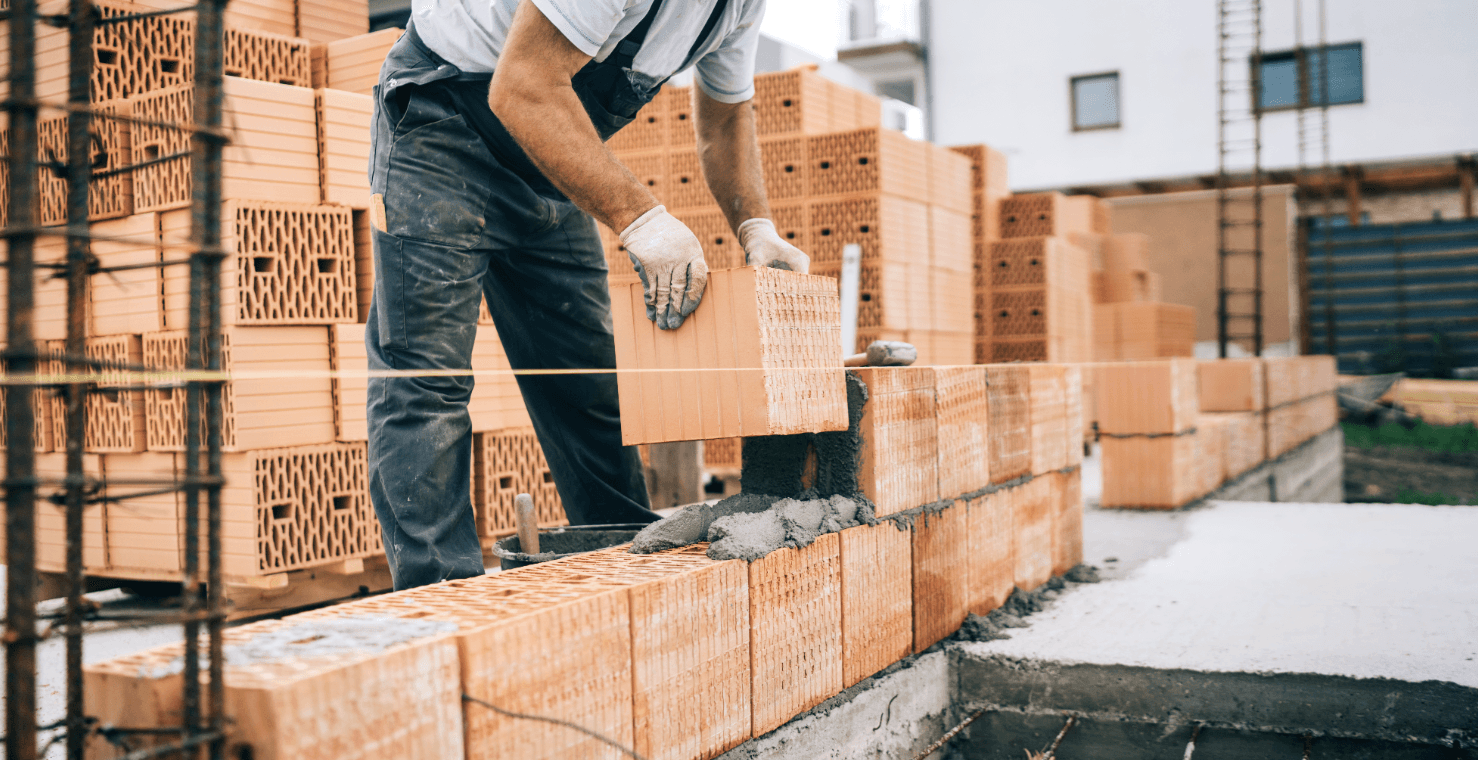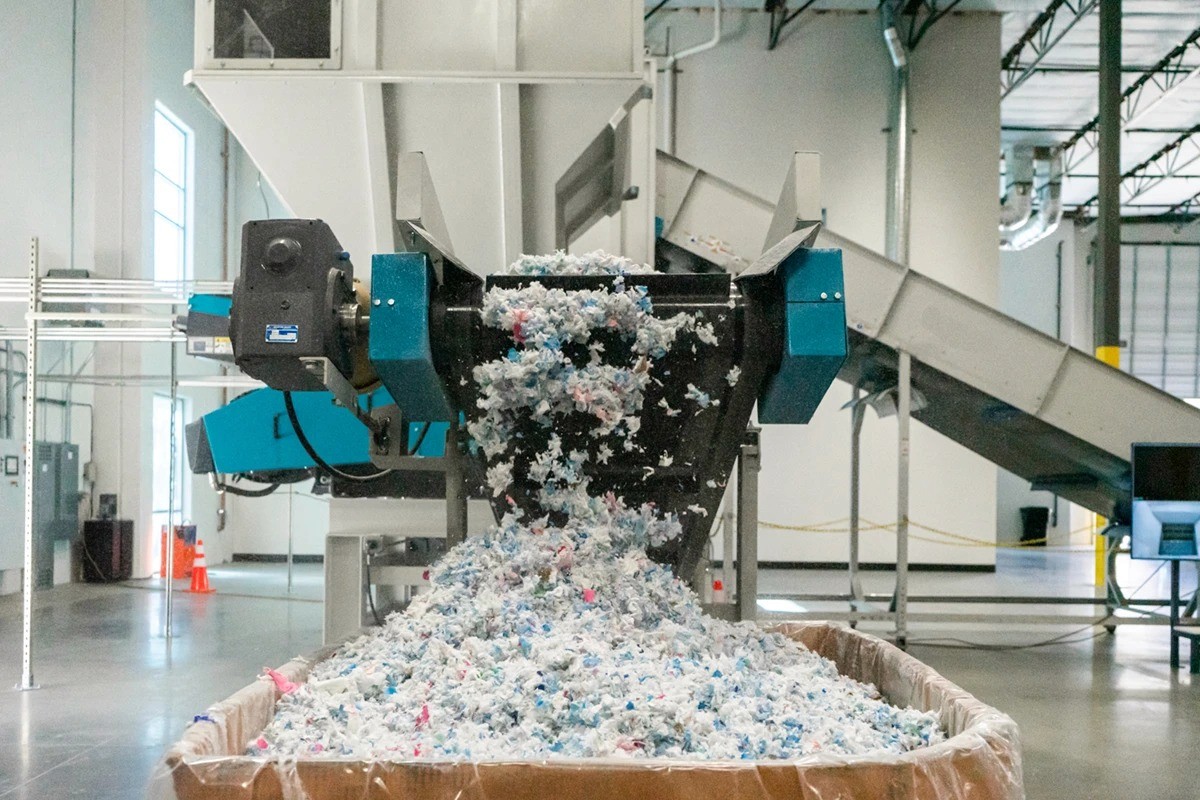We turn fashion waste
into building material.
We turn fashion waste
into building material.
THE PROBLEM
Fast Fashion
Fast Fashion
Fast fashion floods the market with garments made to last briefly before becoming waste: incinerated, landfilled, or exported to the Global South, where they cause severe environmental and social harm. In Ghana, textile waste clogs rivers, overflows landfills, and burns in the open, polluting air and soil and endangering communities.
In Europe, less than 1% of textiles are recycled due to mixed fibers, while over 87% become waste. Reuse offers little relief: poor-quality garments rarely suit second-hand markets, fueling an ever-growing cycle of waste.
In picture: Chorkor beach, Accra, Ghana

THE PROBLEM
Fast Fashion
Fast fashion floods the market with garments made to last briefly before becoming waste: incinerated, landfilled, or exported to the Global South, where they cause severe environmental and social harm. In Ghana, textile waste clogs rivers, overflows landfills, and burns in the open, polluting air and soil and endangering communities.
In Europe, less than 1% of textiles are recycled due to mixed fibers, while over 87% become waste. Reuse offers little relief: poor-quality garments rarely suit second-hand markets, fueling an ever-growing cycle of waste.
In picture: Chorkor beach, Accra, Ghana

THE OUTCOME
Construction Sector
Construction Sector
The construction sector can absorb vast amounts of material, making it a natural destination for textile waste. Yet it urgently needs sustainable alternatives: it consumes over half of all extracted resources, generates a third of Europe’s waste, and contributes nearly 40% of global CO₂ emissions, while depending on supply chains that exploit millions of workers in unsafe and low-paid conditions worldwide.
Beyond these impacts, its economic model remains fragile: reliant on expensive raw materials and driving housing prices beyond reach for much of the population.
In picture: Artisanal mine near Kolwezi, 2022. AFP – Junior Kannah


THE OUTCOME
Construction Sector
The construction sector can absorb vast amounts of material, making it a natural destination for textile waste. Yet it urgently needs sustainable alternatives: it consumes over half of all extracted resources, generates a third of Europe’s waste, and contributes nearly 40% of global CO₂ emissions, while depending on supply chains that exploit millions of workers in unsafe and low-paid conditions worldwide.
Beyond these impacts, its economic model remains fragile: reliant on expensive raw materials and driving housing prices beyond reach for much of the population.
In picture: Artisanal mine near Kolwezi, 2022. AFP – Junior Kannah

OUR SOLUTION
OUR SOLUTION
By turning textile waste into sustainable construction materials, we reduce environmental impact, create social value, and lower costs for industries.
By turning textile waste into sustainable construction materials, we reduce environmental impact, create social value, and lower costs for industries.



PROCESS
PROCESS


01
01
Intercepting Waste
Intercepting Waste
We intercept non-recyclable textiles before dumped or exported, stopping them from becoming a burden for people and the planet.
We intercept non-recyclable textiles before dumped or exported, stopping them from becoming a burden for people and the planet.
Creating LimeTex
Creating LimeTex
We process discarded textiles with hydrated lime, creating a circular building material called "LimeTex", ready to replace resource intensive alternatives.
We process discarded textiles with hydrated lime, creating a circular building material called "LimeTex", ready to replace resource intensive alternatives.
02
02




03
03
Powering Construction
Powering Construction
We deliver LimeTex to the building industry as a high-performance, low-cost alternative that cuts impact without cutting quality.
We deliver LimeTex to the building industry as a high-performance, low-cost alternative that cuts impact without cutting quality.
Technology
Technology
What's LimeTex?!
LimeTex is a new construction material made by combining non-recyclable garment waste with hydrated lime. The waste is shredded, mixed with lime and water, poured into a perforated mold, and compressed to remove excess water. After demolding, it hardens in open air, solidifying into a stable shape.
Why only Non-recyclable Fibers?
LimeTex focuses on mixed-fiber textile waste that cannot be recycled through traditional methods. By reusing these materials, it extends their lifespan and spreads their environmental impact over time, offering a second life to otherwise discarded fibers.
Why Hydrated Lime?
Although hydrated lime is a virgin material, it hardens through carbonation, a natural process that reabsorbs CO₂ from the air. Under optimal conditions, up to 40% of the CO₂ emitted during lime production can be reabsorbed, improving both sustainability and durability.
Have we tested it?
LimeTex is currently undergoing extensive testing to validate its performance as a construction material. Compression, fire resistance, water absorption, flexural strength, and aging tests have been conducted. Although still in development, early results show strong potential, combining sustainability with solid technical performance.
What's LimeTex?!
LimeTex is a new construction material made by combining non-recyclable garment waste with hydrated lime. The waste is shredded, mixed with lime and water, poured into a perforated mold, and compressed to remove excess water. After demolding, it hardens in open air, solidifying into a stable shape.
Why only Non-recyclable Fibers?
LimeTex focuses on mixed-fiber textile waste that cannot be recycled through traditional methods. By reusing these materials, it extends their lifespan and spreads their environmental impact over time, offering a second life to otherwise discarded fibers.
Why Hydrated Lime?
Although hydrated lime is a virgin material, it hardens through carbonation, a natural process that reabsorbs CO₂ from the air. Under optimal conditions, up to 40% of the CO₂ emitted during lime production can be reabsorbed, improving both sustainability and durability.
Have we tested it?
LimeTex is currently undergoing extensive testing to validate its performance as a construction material. Compression, fire resistance, water absorption, flexural strength, and aging tests have been conducted. Although still in development, early results show strong potential, combining sustainability with solid technical performance.
What's LimeTex?!
LimeTex is a new construction material made by combining non-recyclable garment waste with hydrated lime. The waste is shredded, mixed with lime and water, poured into a perforated mold, and compressed to remove excess water. After demolding, it hardens in open air, solidifying into a stable shape.
Why Non-recyclable Fibers?
LimeTex focuses on mixed-fiber textile waste that cannot be recycled through traditional methods. By reusing these materials, it extends their lifespan and spreads their environmental impact over time, offering a second life to otherwise discarded fibers.
Why Hydrated Lime?
Although hydrated lime is a virgin material, it hardens through carbonation, a natural process that reabsorbs CO₂ from the air. Under optimal conditions, up to 40% of the CO₂ emitted during lime production can be reabsorbed, improving both sustainability and durability.
Have we tested it?
LimeTex is currently undergoing extensive testing to validate its performance as a construction material. Compression, fire resistance, water absorption, flexural strength, and aging tests have been conducted. Although still in development, early results show strong potential, combining sustainability with solid technical performance.
What's LimeTex?!
LimeTex is a new construction material made by combining non-recyclable garment waste with hydrated lime. The waste is shredded, mixed with lime and water, poured into a perforated mold, and compressed to remove excess water. After demolding, it hardens in open air, solidifying into a stable shape.
Why Non-recyclable Fibers?
LimeTex focuses on mixed-fiber textile waste that cannot be recycled through traditional methods. By reusing these materials, it extends their lifespan and spreads their environmental impact over time, offering a second life to otherwise discarded fibers.
Why Hydrated Lime?
Although hydrated lime is a virgin material, it hardens through carbonation, a natural process that reabsorbs CO₂ from the air. Under optimal conditions, up to 40% of the CO₂ emitted during lime production can be reabsorbed, improving both sustainability and durability.
Have we tested it?
LimeTex is currently undergoing extensive testing to validate its performance as a construction material. Compression, fire resistance, water absorption, flexural strength, and aging tests have been conducted. Although still in development, early results show strong potential, combining sustainability with solid technical performance.
VALUES
VALUES
We Design for Regeneration
We Design for Regeneration
We Design for Regeneration
Companies
Companies
We offer a sustainable and circular construction material that guarantees technical performance and regulatory compliance. It is cheaper than conventional alternatives, as it’s made from free, and stable waste sources. Companies using LimeTex gain access to ESG credits, green incentives, and sustainable public procurement channels.


Companies
We offer a sustainable and circular construction material that guarantees technical performance and regulatory compliance. It is cheaper than conventional alternatives, as it’s made from free, and stable waste sources. Companies using LimeTex gain access to ESG credits, green incentives, and sustainable public procurement channels.


Enviroment
Enviroment
Enviroment
By preventing non-recyclable textiles from ending up in landfills or incinerators, we cut pollution and emissions at the source. Reusing those fibers as feedstock for LimeTex extends their useful life, spreading their embodied impact over a longer timeframe. Our hydrated-lime binder hardens by carbonation, naturally absorbing CO₂ during curing.



Society
Society
Society
By stopping the export of textile waste to the Global South, we helps relieve local communities from overwhelming waste streams. We also prevents the dangerous conditions linked to the extraction of raw materials. At the same time, we activates local and short supply chains, generating positive impacts on European territories.



PRESS
PRESS
Awards & Recognitions
Awards & Recognitions
Awards & Recognitions
ABOUT
Lillo Studio
Lillo Studio
We are four product designers united by a strong friendship and a passion for design that creates a real impact: that’s why we founded TextileRefuge. For us, design is more than products: it’s social innovation, circularity and experimentation to reimagine the world in a regenerative way.
ABOUT
Lillo Studio
We are four product designers united by a strong friendship and a passion for design that creates an impact: that’s why we founded TextileRefuge.
For us, design is more than products: it’s social innovation, circularity and experimentation to reimagine the world in a regenerative way.

Giacomo Frova

Giacomo Frova

Giacomo Frova

Carola Castiglione

Carola Castiglione

Carola Castiglione

Mattia Cappiello

Mattia Cappiello

Mattia Macciachini

Mattia Macciachini

Mattia Cappiello

Mattia Cappiello

Mattia Macciachini

Mattia Macciachini

TextileRefuge
By Lillo Studio

TextileRefuge
By Lillo Studio

TextileRefuge
By Lillo Studio







